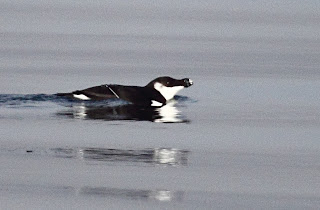What would be the next best thing to having a Baltimore Oriole in your backyard
during one of Connecticut's harshest winters in recent history?
How about having Two!
Last Thursday 1/20/11 a second young female Baltimore Oriole showed up in our backyard.
This bird was not at all welcome by the original bird that had been here for over a week.
I will refer to the 1st bird to arrive as "A" and the 2nd as "B"
Every attempt by B to land on the feeder was quickly challenged by A.
In fact A had become the ruler of the yard, the mockingbirds and cardinals that were coming in for jelly,were quickly chased off the feeder, this young oriole is this yards dominant bird, and is protecting it's domain.
understand what was needed, and what was happening.
First there was a limited food source, bird A claimed stake to it, her life was depending on this source, there wasn't enough to share with others. Next was that oranges and grape jelly may be fine for entertaining backyard orioles in the warmer months, but these birds were not going to survive for long in this
extreme cold and snow on just a few sweets.

Meal worms were suggested, 100 each day per bird.
In the above photo A is swallowing a mouthful of these.
I distinguish between the two birds by the median coverts on the right wing of each bird.
In the above photo, these are the strong white tipped feathers that are forming a horizontal white bar
(wing bar) on it's wing.
On this bird (A) this line is solid, (click on the picture and you can count these feathers)
This is B, she has dropped a few of these feathers and has a clear gap in the lineup of median coverts.
Q....Any idea where they get the Baltimore Oriole name?
a city in Maryland?... a baseball team?....
I started putting out meal worms for these two, but things were just not working out, as soon as I put out a bunch A would either eat them or perch nearby and protect them, things were looking bleak for B as this bird could only grab a few worms before being chased off.
I had another feeder in my garage and set it up about 20' from the first on Saturday, A thought this was great, twice the food!
As time went on, A's belly became fuller and more content, she slowed down on her patrols of the feeders, and slowly allowed B to feed longer and longer.
They now perch in the morning and afternoon sun, sitting sometimes within a few feet of each other, until A realizes B is there, she then move of, just not as far each time.
I fill both feeders about 6 times a day with at least 15 worms in each, and make sure that they and not others are eating the worms. This is working, as of today they are now sharing the goods equally.
These neo-tropical migrants (could or should be in South and Latin Americas this time of year, at least FL.)
survived 3 degrees last night, and only slightly warmer the previous night.
My guess is they will be here for a while
A with a meal worm.
Answer from above:
George Calvert, a 17c nobleman.
this birds colors resembled the coat of arms of good ole George,
who was also best known as Lord Baltimore!
"Baltimore's Oriole"








































+copy.jpg)


